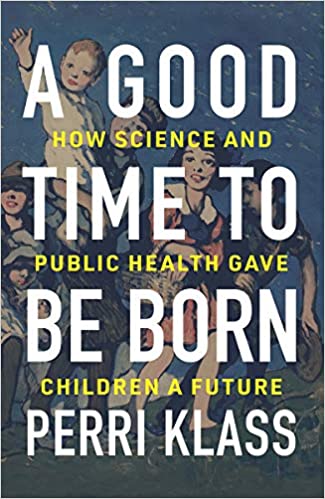 A Good Time to Be Born: How Science and Public Health Gave Children a Future by Perri Klass
A Good Time to Be Born: How Science and Public Health Gave Children a Future by Perri Klass
Published in October of 2020.
I have no patience for nostalgia. No, the past was not better than the present. And the future will be better than now.
The reality of progress is as true for higher education as it is for everything else.
Today’s colleges and universities are better places than before. Our institutions are more diverse and more creative than in the past.
As Eddie Maloney and I have argued, the biggest higher ed story that nobody has been talking about are the advances in teaching and learning that have occurred over the past couple of decades.
If we make the right choices today, those gains in teaching and learning can accelerate over the decades to come.
Higher ed, however, is not the best place to understand the realities of progress. The most compelling evidence that “the arc of the moral universe is long, but it bends toward justice.” (MLK, 1968) comes from the long-term story of changes in child mortality.
As pediatrician and author Perri Klass elegantly describe in A Good Time to Be Born, the story that should most shape our thinking about the previous century is the decline of infant and child death. One hundred years ago, the infant mortality rate in the US was 100 deaths for every 1,000 live births, as observed in the first year of life. Today, the US infant mortality rate is 5.7.
When my great grandparents were giving birth to my grandparents, the death of a child was common. In the century leading up to the twentieth, the death of a child was a near-universal experience in most families.
Today, the death of a child is a sentinel event. If a child dies, the assumption is that something fundamentally went wrong. The leading cause of death for children 1-to-14 is accidents.
For most of human history, childhood death was an unremarkable aspect of family life. Wealth was not protective. The children of billionaires (Rockefeller) and presidents (Adams, Jefferson, Taylor, Lincoln, Garfield, Cleveland, TR, FDR, and Eisenhower) all lost children.
The most recent president to have a child die while in office is JFK, whose son Patrick died 39 hours after birth in 1963. Today, baby Patrick Kennedy would have most certainly survived.
What accounts for the astounding decline of childhood mortality in wealthy countries? And can we expect this decline to occur in emerging economies?
A Good Time to Be Born provides in-depth answers to the first question while leaving the second question largely unaddressed.
Klass, who is that rare double threat of a professor in both Pediatrics and Journalism at NYU, sticks mainly to the marvelous story of the transformation in US childhood mortality. She gives equal weight to advances in public health as well as medicine. A Good Time to Be Born moves fluently between the macro population-based story of health determinants and the micro-story of how individual parents and healthcare providers have experienced this shift.
A Good Time to Be Born does provide an in-depth analysis of the future of childhood mortality in today’s developing countries. While Klass points out that tremendous advances have been made in the past decades and that wealth is not always a predictor of health outcomes, she is mainly silent on what will be needed for the entire world to achieve the decline in childhood mortality experienced within wealthy nations.
Should developing countries make investments in public health or hospitals, clean water, or doctors? Is maternal education more critical than health clinics? If the goal is to have as many babies grow up to be healthy adults as possible, should a country prioritize economic growth or economic equality?
Like all good books, A Good Time to Be Born generates more questions than answers.
In this time of pandemic and needless suffering and death, we must retain an appreciation of the long-term reality of human progress.
If our great grandparents and grandparents were able to create a world where most babies and kids thrive, what might we do to advance the health and well-being of all people in generations to come?
What are you reading?
"time" - Google News
April 20, 2021 at 03:35AM
https://ift.tt/3gotFSg
Why During a Pandemic is the Best Time to Read 'A Good Time to Be Born' | Learning Innovation - Inside Higher Ed
"time" - Google News
https://ift.tt/3f5iuuC
Shoes Man Tutorial
Pos News Update
Meme Update
Korean Entertainment News
Japan News Update
Bagikan Berita Ini














0 Response to "Why During a Pandemic is the Best Time to Read 'A Good Time to Be Born' | Learning Innovation - Inside Higher Ed"
Post a Comment